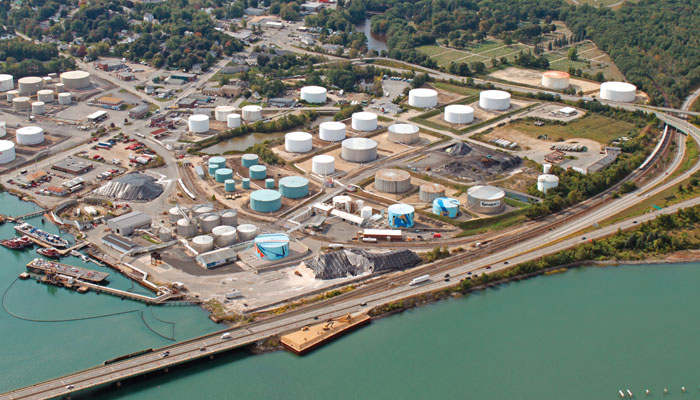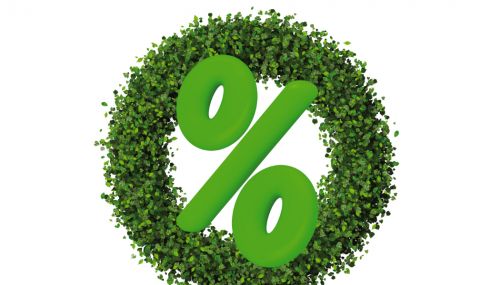All
Q&A: Blending for a Brighter Future

Sprague’s Steven Levy discusses intersection of petroleum and biodiesel
When the U.S. biodiesel industry was gaining strength in the early 2000s, leadership was provided entirely by farmers from the Midwest, where soybeans are an important crop. Within a few years, though, the farmers began forging ties with producers and then with counterparts in the petroleum industry, who were positioned to distribute biodiesel as a drop-in component to petroleum distillates.
Sprague Operating Resources LLC, an independent petroleum distributor headquartered in Portsmouth, N.H., was quick to hop on the biodiesel bandwagon and in 2006 became the first National Biodiesel Board BQ-9000 Accredited Terminal Marketer at its Albany-Renssellaer Terminal.
Sprague executive Steven J. Levy got involved with the National Biodiesel Board (NBB) in 2003 and held a number of leadership positions, leading to his election in 2013as NBB Chairman. A Queens, N.Y., native, he is the first non-farmer, non-producer and non-Midwesterner to lead the NBB and was re-elected to a second term as Chairman in 2014. Oil & Energy recently caught up with Levy for an in-depth discussion about the continuing integration of the biodiesel and petroleum industry.
Oil & Energy: How did you, as a petroleum company executive become so involved in biodiesel that you came to chair the National Biodiesel Board?
Steven J. Levy: One of the many reasons Sprague is an industry leader is our proactive search for new products, programs and services to differentiate Sprague in the marketplace while adding value to our customers (to reduce their costs, increase efficiencies, manage their risks). Most importantly, we provide solutions either for their operations and/or their customer retention. This is illustrated by our vast product offering, unmatched programs, services and unparalleled distribution network. For us, our interest in biodiesel was first driven by customer demand in 2000. Customers desired the cleaner-burning option and wanted to comply with the Energy Policy Act of 2005 (EPAct). Since biodiesel works seamlessly with other diesel applications, it was a natural fit.
At Sprague, we believe in volunteering our time to support industries in which we participate, as well as with charitable organizations. We became involved with NBB in 2003 and soon after as a member when we decided the biodiesel industry was here to stay. NBB then and today is “the source” for everything you need and want to know about biodiesel. For us, in the early years, it was all about biodiesel education. During these early years we had thoughts of building our own processing plants at our terminals but quickly realized at the time we were good at supply and distribution, not biodiesel processing in a new and evolving technology, feedstock and variable operating, commoditized business.
Initially NBB was comprised mostly of farmers and producers, while being devoid of petroleum industry representation that would afford another perspective on how to grow the biodiesel industry. After all, how and where was the fuel going to be consumed? As a result, over the years I became more and more involved undertaking many positions including Treasurer, Marketing Committee Chair and BQ-9000 Accreditation Commissioner, and I held an active role on the technical committee.
As a result, I am honored by and appreciate the confidence of membership that elected me to the current leadership role as NBB Chair. It has been very rewarding working with such a diversified group of smart professionals and industry leaders as well as having the opportunity to impact federal policy.
O&E: Policymakers in New York City are including the Oilheat industry as part of the solution for reducing greenhouse gas emissions, because the Oilheat leadership is embracing biodiesel blending and ultra low sulfur heating oil (ULSHO). Is this an important example for other jurisdictions?
SJL: New York has long been a leader in alternative fuels, and it sets a stage for communities and other governmental agencies across the country. Other fleet managers recognize that if it is working in our largest municipality, it can work anywhere.
It’s also important for suppliers to work with municipalities to understand their near-term and future sustainability goals, whether it’s the NYC PlaNYC to reduce emissions and become more sustainable or using biodiesel due to its excellent fuel properties.
New York City is setting an example for the entire Northeast by embracing ultra-low sulfur Bioheat® fuel blends as a cost effective means to reduce carbon emissions while providing a more reliable, environmentally friendly heating option. The use of biodiesel in heating oil as Bioheat® fuel provides an 80 percent reduction in lifecycle carbon. This is a great example of a win-win-win: a win for policymakers, a win for the environment, and a win for the customer.
O&E: Please evaluate the significance of the ASTM’s decision to approve new grades for heating oil up to B20. How can the Oilheat industry best capitalize on this opportunity?
SJL: ASTM sets the industry consensus standards for the fuels we use in the U.S. Meeting an ASTM fuel standard provides customers, dealers, and equipment companies with the confidence they need to endorse and support a new fuel. EPA, OSHA, Fire Marshals, and many others use or enforce ASTM standards, so securing an ASTM standard is critical if a fuel is to become nationally used and accepted in the market. Meeting the ASTM standard is critical in making sure the fuel will perform as expected.
ASTM published specifications for heating oil blends containing up to 5 percent biodiesel in 2008, and meeting the ASTM specification has been a key to the successful introduction of Bioheat® blends over the last 6 years. With the successful main committee vote this past December, ASTM should publish the B6-B20 heating oil specification as a new grade in the ASTM D396 fuel oil standard in February of 2015. Meeting this specification will be critical in the successful transition of the heating oil market from 5 percent blends to blends containing up to 20 percent biodiesel, which provides the platform for heating oil to be superior to natural gas in terms of carbon emissions to retain customers and recapture lost market share. It also provides the platform for continued efforts on higher blends, such as pure biodiesel or B100, which the industry has already started working on. B100 provides a 100 percent biodegradable, non-toxic, fuel that provides the 80 percent carbon reduction today that some policy makers are looking for in 2050.
O&E: How important is it for Oilheat to take advantage of ULSHO and biodiesel blending to improve the fuel’s standing with regulators, environmentalists and climate change activists?
SJL: For the oilheat industry Bioheat® fuel provides an opportunity to market a product that can compete with other alternative fuels or meet requirements from current and potential new legislation. NYC’s move to eliminate No. 4 and No. 6 oil from city buildings and apartments is an example of what suppliers have to adapt to in terms of regulatory requirements. Bioheat® fits perfectly with ultra-low sulfur heating oil to ensure fuel dealers have a fuel that fits the environmental and performance agenda required to compete in today’s energy marketplace. We must continue to invest in the messaging on the benefits of this fuel to the various stakeholders, however.
O&E: Does it make sense for the Oilheat industry to pursue state mandates for Bioheat®? Would B20 mandates make sense? Would they be beneficial to Oilheat dealers?
SJL: It will be up to policymakers to decide how best to encourage and support the use of Bioheat® as a reliable, domestic source of clean-burning, low carbon energy for homes in the Northeast, compared to fossil-based electricity, propane and natural gas. One thing seems to be clear in the Northeast, however, and that is if the heating oil industry doesn’t move to cleaner-burning, low carbon fuels it remains susceptible to losing more market share in the future. If mandates are on the table, we will have to address infrastructure and the cost thereof.
O&E: As a participant in both the petroleum and biodiesel industries, you have a unique view of the evolving relationship between the two. Please evaluate the current level of cooperation and highlight new opportunities to cooperate going forward.
SJL: I personally view the petroleum and biodiesel industries as one. In today’s environment, given the RFS, state and local legislation, sustainability strategies, and opportunistic blending economies, even though some may think they are not involved or affected by biodiesel they are. Biodiesel and Bioheat® are here to stay and I believe people are just beginning to acknowledge it.
O&E: Please evaluate the success of Bioheat® fuel to date and identify the primary obstacles to more widespread adoption of Bioheat® marketing.
SJL: Since the word Bioheat® was first uttered somewhere back in 2003 the technological preparation and market development strategies established and deployed by both NBB and the National Oilheat Research Alliance (NORA) have clearly made a difference. The collaboration between NBB and NORA ensures a positive outcome for an industry seeking a recipient of its fuel and an industry seeking a cleaner burning option to combat competitive fuels while reducing maintenance costs. As progress grows on approvals for higher blends, further education and training will have to be provided to dealers and ultimately to consumers. We need to talk to our customers at all levels about this new improved fuel but we need to tell the story consistently so not to confuse the consumer.
O&E: How effectively is the Oilheat industry capitalizing on the marketing and policy opportunities that biodiesel blending creates? How can the industry derive more value from biodiesel blending?
SJL: The oilheat industry is really just starting to effectively capitalize on the marketing and policy opportunities that biodiesel blending creates. Biodiesel is naturally high in fuel lubricity and is already an ultra-low sulfur fuel, and these qualities reduce heat exchanger fouling and ongoing maintenance. Biodiesel also naturally contains oxygen, which allows it to burn with less particulates and with less NOx than conventional heating oil in most equipment. Brookhaven National Labs has demonstrated, and we hear from some Bioheat® dealers, that Bioheat® results in less maintenance and furnace problems than with conventional fuel oil, and these findings, combined with the reliability of oilheat creates a real marketing opportunity that many have not yet taken exploited. On the policy side, various low carbon initiatives like the federal RFS2, or other state or city movements to encourage biodiesel use (i.e. NYC), are now allowing blenders to start to monetize the low carbon, clean-burning nature of Bioheat® and capture that inherent value. As policymakers legislate to reduce carbon in heating/cooling buildings in the Northeast, we expect there to be added opportunities for Bioheat® to provide value to customers and dealers alike in the future.
O&E: How well prepared is the Oilheat industry to handle and manage biodiesel blends without elevating the risk of fuel-related problems?
SJL: There is already a strong record of success with Bioheat®.
With a residential tax incentive in New York many oilheat dealers have been delivering Bioheat® for several years. I am confident this will continue.
The advent of the ASTM specifications for B6-B20 in heating oil provides the platform for growing use of biodiesel blends. The fuel industry has been using B6-B20 in the on/off road diesel market for many years, so similar practices will need to be integrated with higher blends in heating oil that has already been done with on/off road diesel fuel. Many are already supplying higher blends with much success in the heating oil market, but for those new to the market there will be a learning curve. Fuel wholesalers blending above the rack that have the necessary physical assets will be well equipped to accept, store, blend and manage the quality of a finished gallon of Bioheat®. Below the rack blending will require the necessary equipment and attention to fuel quality. With adequate training the downstream will be able to tackle blending and distribution, but it does take more attention and effort than upstream blending and all involved must be educated.
O&E: Federal policy on biodiesel has been somewhat erratic and unpredictable. How badly has the biodiesel industry been hurt by unpredictability regarding the blender’s tax credit and the RFS mandated volumes?
SJL: Policy uncertainty affects everyone in the industry from the farmer and used cooking oil reclaimer to the consumer. It’s been tough for many producers to say the least, especially the smaller producers. We have seen many pull back production and even close their doors. The majority of fuel suppliers have not invested in infrastructure due to policy uncertainty. The energy sector is highly influenced by policy, whether it is tax breaks for petroleum or incentives for renewables. Petroleum has the benefit of decades of consistent policy where, for example, with biodiesel the industry has yet to see even three years of consistent, predictable support. It’s no way to run a business, and it will be critical that the administration act quickly to safeguard the economic investment and livelihoods of this industry and for critical industry sustainable growth.
O&E: How can federal policy best support the biodiesel industry going forward?
SJL: Regarding the RFS, it’s quite simple. Deliver on the promises and follow the law. Volume requirements for 2014 are still not released or published. That’s some two years late, and the EPA was on record stating it would be finalized last summer. Business investments were made and lost based on these broken promises. Again, the industry needs consistent policy. With that said, we are anxiously optimistic the EPA will announce growing RFS volumes soon for the years 2014, 2015 and 2016 with verbiage to support the industry in the years ahead with consistent timely policy.
O&E: Do you foresee a time when the biodiesel industry will be able to operate without tax credits and/or volume mandates?
SJL: Biodiesel is a relatively young industry. As history illustrates, any new energy industry requires support to secure investment in technology, infrastructure and education to afford inroads for sustainability. The industry needs a consistent multi-year support policy in place before we can answer this question.
O&E: How much of a threat to Oilheat would carbon taxing be, either on a state or national level? Is the industry better off fighting carbon taxes or working to influence carbon-taxing formulas?
SJL: If some type of carbon taxation or legislation occurs, the adoption of clean-burning, low carbon Bioheat® blends should put the oilheat industry at a competitive advantage to all other fossil alternatives (natural gas, propane, petroleum-based fuel oils, coal-based electricity, etc.). The national RFS2, with its “advanced biofuels” category requiring over a 50 percent reduction in carbon to qualify (biodiesel provides over a 50 percent carbon reduction so is an “advanced biofuel”) serves as the first concrete example of this, and the framework of the RFS2 allows biodiesel blenders to capture that value and at some times provide biodiesel blends to consumers at a lower price than conventional fuel oil.
O&E: Please describe the steps Sprague has taken to simplify the process of buying and marketing Bioheat® blends for individual marketers.
SJL: Sprague continues to evaluate, integrate and offer specific biodiesel and Bioheat® blends at locations it markets fuel. Sprague was designated the first National Biodiesel Board BQ-9000 Accredited Terminal Marketer at our Albany-Rensselaer Terminal. We have added rack injection blending at various terminals and will continue to expand, depending on customer demand, organically or due to legislation, at our owned and throughput terminal network.
O&E: What steps has Sprague taken to improve resiliency at terminals and make them more stormproof?
SJL: We continue to evaluate storm preparedness and recovery processes at every terminal. This is as simple as raising electrical infrastructure to implementing our ongoing supply and distribution plans to maintain inventory throughout our unparalleled terminal network. In this industry, anyone who thinks they know the direction of pricing, what legislation will pass, or how to completely stormproof a terminal will not be long for this business. We can reduce the risk of a potential issue, whether it applies to supply, distribution, legislation, etc. but will always have some type of risk associated with it. As witnessed with Hurricane Sandy, we were successful in supplying our customers as a result of our dedicated employees and storm preparedness program.
O&E: Please tell us about any important changes coming in Sprague’s operations.
SJL: I would point to the recent successful acquisition of the premier New York City Castle Terminal as an example of Sprague’s growth and to further enhance our commitment and investment in the industry. Even as we expand our terminal network and customer base, we will continue to strive to play a leadership role in the markets we serve.
Related Posts
 How to Set Your Business Apart with Renewable Propane
How to Set Your Business Apart with Renewable Propane
Posted on October 16, 2025
 EIA Report: Biodiesel and Renewable Diesel Imports Fall Sharply
EIA Report: Biodiesel and Renewable Diesel Imports Fall Sharply
Posted on October 16, 2025
 Northeast Liquid Fuel Providers Put Higher Bioblends in Focus
Northeast Liquid Fuel Providers Put Higher Bioblends in Focus
Posted on August 19, 2025
 Lower Carbon Lineup Puts Businesses on the Path to Net Zero Goals
Lower Carbon Lineup Puts Businesses on the Path to Net Zero Goals
Posted on August 18, 2025
Enter your email to receive important news and article updates.
